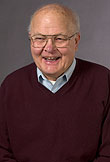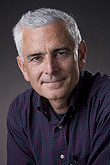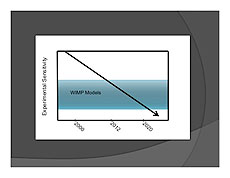|
Have a safe day!
Wednesday, April 11
2 p.m.
Joint Experimental-Theoretical Physics Seminar - One West
Speaker: Soo-Bong Kim, Seoul National University
Title: Observation of the Last, Weakest Neutrino Oscillation at RENO
3:30 p.m.
DIRECTOR'S COFFEE BREAK - 2nd Flr X-Over
4 p.m.
Fermilab Colloquium -
One West
Speaker: Donald Umstadter, University of Nebraska, Lincoln
Title: An All-Laser-Driven X-Ray Synchrotron Light Source
Thursday, April 12
10:30 a.m.
Research Techniques Seminar - Curia II
Speaker: George Williams, Voxtel, Inc.
Title: Technology Development at Voxtel, Inc.
2:30 p.m.
Theoretical Physics Seminar - Curia II
Speaker: Pilar Coloma, Virginia Tech
Title: Neutrino Oscillations for Large q13
3:30
DIRECTOR'S COFFEE BREAK -
2nd Flr X-Over
THERE WILL BE NO ACCELERATOR PHYSICS AND TECHNOLOGY
SEMINAR TODAY
Click here for NALCAL,
a weekly calendar with links to additional information.
Upcoming conferences
|
|
Wednesday, April 11
- Breakfast: English muffin sandwich
- Portabello harvest grain
- Santa Fe chicken quesadilla
- Hoisin chicken
- Smart cuisine: Parmesan fish
- Cuban panini
- Assorted sliced pizza
- Shrimp pesto
Wilson Hall Cafe Menu |
|
Wednesday, April 11
- Salmon w/ sweet chili sauce
- Sugar snap peas
- Coconut rice
- Pineapple flan
Friday, April 13
Dinner
- Spanakopita
- Grilled lamb chops
- Oregano cubed potatoes
- Gigantes (greek lima beans)
- Karidopita
Chez Leon Menu
Call x3524 to make your reservation.
|
|
Donald Young: First employee
 |
| Donald Young |
On March 30, Fermilab’s first employee died at the age of 90. Donald Young was internationally known for his work on linear accelerators and instrumental in the establishment of Fermilab’s LINAC.
“Don was a very solid person,” John Peoples, Fermilab’s third director, said. “He filled the roles that needed to be filled. If you needed a leader, he would lead, but if you needed someone to be your deputy, he could be your deputy. He kept projects going and was really easy to get along with.”
After serving as a communications officer in the Infantry during WWII, Young received his PhD from the University of Minnesota and became a key player in the Midwestern Universities Research Association (MURA). When Fermilab was established in 1968, Young was the first person Robert Wilson hired.
"Don was the man I wanted to head the Linac Section of the National Accelerator Laboratory," said Wilson in a 1969 interview with The Village Crier. "He was my first choice and luckily, for [Fermilab], he accepted the invitation and the challenge."
In September 1968, Young, Wilson and Francis Cole sat at a picnic table and developed the plans for the first of many particle accelerators that would transform a plot of farmland in Batavia into a high-energy physics laboratory.
Read more
—Sarah Charley
|
STEM career expo - today
High school students can learn about high-tech career options at the Science, Technology, Engineering and Mathematics (STEM) Career Expo from 5:30 to 8:30 p.m. today. The event is free of charge and will take place in Fermilab's Wilson Hall.
Contact edreg@fnal.gov for more information or visit the career fair website. No advance registration is necessary.
|
LHC smashes particle collision record
From New Scientist, April 10, 2012
The Large Hadron Collider has woken from its winter slumber with a bang. Just after midnight local time on 5 April, the world's most powerful particle accelerator, based near Geneva, Switzerland, shattered its own world record by smashing protons together with a combined energy of 8 teraelectronvolts (TeV).
The previous world record was 7 TeV, the energy at which the LHC operated from March 2010 to last October. Then, protons zipped around the accelerator's 27-kilometre-long loop at speeds high enough for each to carry 3.5 TeV, so that collisions between pairs carried an energy of 7 TeV.
That was enough energy for two of the LHC's experiments to provide hints of the Higgs boson, the long-sought particle that would complete the standard model of particle physics, and explain how all other particles get their masses.
Now, with protons carrying 4 TeV apiece, the LHC has a better chance of creating the elusive beasts it was designed to find. According to a CERN statement, research director Sergio Bertolucci said:
"The increase in energy is all about maximising the discovery potential of the LHC. And in that respect, 2012 looks set to be a vintage year for particle physics."
Read more
|
Astronomers spot a solar system more populous than ours
From Nature, April 9, 2012
Which star has the most planets surrounding it? It's no longer the Sun, according to an astronomer who says he can identify nine planets orbiting the bright, nearby star HD 10180 (pictured). "Now that Pluto is not a planet, this system is likely more planet-rich than the Solar System," says Mikko Tuomi, a postdoctoral researcher at the Centre for Astrophysics Research at the University of Hertfordshire in Hatfield, UK.
Tuomi's analysis, accepted for publication on 6 April by the journal Astronomy & Astrophysics, is a re-interpretation of 190 measurements made between 2003 and 2009 by the High Accuracy Radial Velocity Planet Searcher (HARPS), a spectrograph on the 3.6-metre La Silla telescope in Chile, which looks for periodic wobbles in a star caused by the tug of its planets. The 2010 announcement from the HARPS team identified five planets, with suggestions of a sixth and seventh.
But that study was based on a classical, or frequentist, approach, which asks whether the data can support or reject narrow, sequential hypotheses: is there a seventh planet? Is there an eighth planet?
Read more
|
|
Next generation of dark matter
 |
| Craig Hogan |
Craig Hogan, director of the Center for Particle Astrophysics, wrote this week's column.
Scientists gathered at a Fermilab workshop last Friday to discuss the hunt for cosmic dark matter. They agreed that we may finally be closing in on a long-sought quarry. Fermilab theorist Dan Hooper succinctly expressed their sense of hopeful anticipation in the figure shown below. Technology is improving rapidly - faster than Moore's law for computer speed - and theorists expect a discovery soon.
The Department of Energy and the National Science Foundation recently announced that they will competitively fund advanced dark-matter searches with Generation 2 detectors. Fermilab projects will be part of this new initiative, and one of them could be the first to detect this new form of matter.
Astronomers first discovered hints about eighty years ago that intergalactic space is filled with vast quantities of gravitating matter that emits no light. Over the years, they accumulated substantial evidence, from gravitational effects, that most of the mass of galaxies is invisible.
The favorite explanation is that this dark matter is actually an entirely new form of matter, left over from the early universe. That simple hypothesis explains a lot of precision measurements of cosmic structure. Another idea is that dark matter interacts weakly with regular matter, which would allow us to study it directly with very sensitive particle detectors.
Theory says that these weakly interacting massive particles (WIMPs), if they exist at all, would have been produced in about the right quantity in the hot Big Bang and would explain all the dark matter in galaxies today.
The weak interaction is, well, weak, making dark-matter particles, like neutrinos, hard to detect. On the other hand, galaxies such as our own Milky Way are supposed to be filled with them, and we know what type of particle interaction we are looking for. As illustrated in Dan's figure, we now finally have the technology to detect WIMPs, if they exist.
Fermilab is pursuing several experiments and technologies to detect galactic WIMPs directly. These need to be deployed deep underground to record the rare occasion when a WIMP zooming through our galaxy bounces off a nucleus in the apparatus. In addition, Fermilab is involved in experiments at the Large Hadron Collider, where scientists try to produce dark-matter particles in powerful proton-proton collisions.
 |
| Dan Hooper's schematic plot shows how dark-matter experiments are becoming more sensitive to weaker and weaker particle interactions over time. If cosmic dark matter is made of Weakly Interacting Massive Particles, we should find them in the next decade.
|
|
ES&H weekly report, April 10
This week's safety report, compiled by the Fermilab ES&H section, contains one incident. Despite using the proper precautions, an employee got something in his eye while grinding a weld. He received first-aid treatment.
Find the full report here. |
|